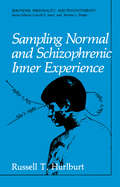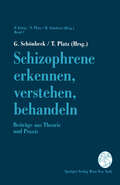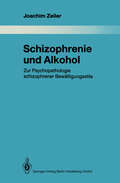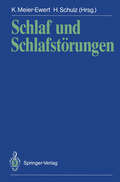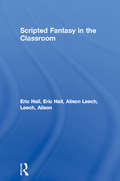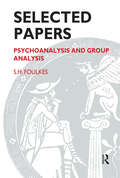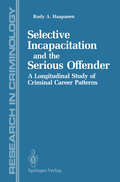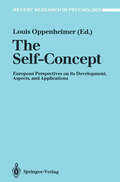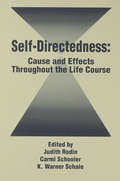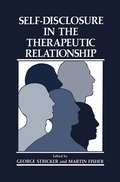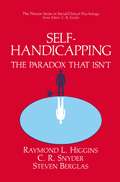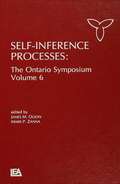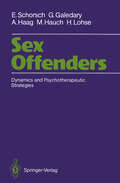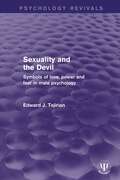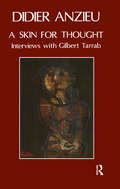- Table View
- List View
Sampling Normal and Schizophrenic Inner Experience (Emotions, Personality, and Psychotherapy)
by Russell T. HurlburtWhat are the basic data of psychology? In the early years of experimental psychology, they were reports of ''brighter'' or "heavier" or other esti mates of the magnitude of differences between the sensory stimuli pre sented in psychophysical experiments. Introspective accounts of the ex perience of seeing colored lights or shapes were important sources of psychological data in the laboratories of Cornell, Harvard, Leipzig, or Wiirzburg around the tum of the century. In 1910, John B. Watson called for the objectification of psychological research, even parodying the typical subjective introspective reports that emerged from Edward Bradford Titchener's laboratory. For almost fifty years psychologists largely eschewed subjective information and turned their attention to observable behavior. Rats running mazes or pigeons pecking away on varied schedules of reinforcement became the scientific prototypes for those psychologists who viewed themselves as "doing science. " Psychoanalysts and clinical psychologists sustained interest in the personal reports of patients or clients as valuable sources of data for research. For the psychologists, questionnaires and projective tests that allowed for quantitative analysis and psychometrics seemed to circum vent the problem of subjectivity. Sigmund Freud's introduction of on going free association became the basis for psychoanalysis as a therapy and as a means of learning about human psychology. Slips-of-the tongue, thought intrusions, fantasies, hesitations, and sudden emo tional expressions became the data employed by psychoanalysts in for mulating hypotheses about resistance, memory, transference, and a host of presumed human wishes and conflicts.
Schizophrene erkennen, verstehen, behandeln: Beiträge aus Theorie und Praxis (Aktuelle Probleme der Schizophrenie #1)
by G. Schönbeck T. PlatzSchizophrenia: Concepts, Vulnerability, and Intervention
by KurtHahlweg Eckart R. StraubeSchizophrenia remains the most complex, puzzling, and because of its tendency towards chronicity, the most severe of the mental disorders. It is a very heterogeneous disorder characterized by extreme disruptions of thought, per ception, behavior, and emotion. About I % of the population worldwide will experience at least one schizophrenic episode. Most of the patients will have a number of exacerbations leading in about 30% of cases to a chronic residual state, due either to the illness itself or to psychosocial environmental factors, or-most likely-to the interaction of both. Given the enormous personal hardship for patients and their relatives as well as the staggering costs of the illness for our societies, research in schizo phrenia has become the number one priority in many countries, especially in the United States. However, research on the etiology of schizophrenia has failed to establish a single causal factor, and it is nowadays accepted to be multifactorial. A combjnation of biological predisposition and enviromnental circumstances is assumed to be necessary for the manifestation of the illness. This shift in orientation away from an either/or (biological or environmental, e.g., family interaction) point of view, as evident in the work of the 1950s and 1960s, was certainly desirable to encourage research.
Schizophrenie und Alkohol: Zur Psychopathologie schizophrener Bewältigungsstile (Monographien aus dem Gesamtgebiete der Psychiatrie #61)
by Joachim ZeilerSchlafstörungen in der Praxis: Diagnostische und therapeutische Aspekte. Symposium zum 38. Deutschen Kongreß für Ärztliche Fortbildung Berlin 1989
by G.A.E. Rudolf A. EngferScripted Fantasy in the Classroom
by Eric Hall Alison LeechMany teachers have tried simple relaxation techniques in their classrooms and been surprised by their success. This step by step guide to the technique of scripted fantasy shows how the forces of the imagination can be harnessed to improve the social skills and classroom performance of students of all ages and all abilities. It provides sample scripts to get the teacher started, and gives advice on classroom management and on processing the fantasy experience without compromising students' privacy.
Scripted Fantasy in the Classroom
by Eric Hall Alison LeechMany teachers have tried simple relaxation techniques in their classrooms and been surprised by their success. This step by step guide to the technique of scripted fantasy shows how the forces of the imagination can be harnessed to improve the social skills and classroom performance of students of all ages and all abilities. It provides sample scripts to get the teacher started, and gives advice on classroom management and on processing the fantasy experience without compromising students' privacy.
Secrets About Men Every Woman Should Know
by Barbara De AngelisSome diagrams in this title are best viewed on a tablet device.
Selected Papers: Psychoanalysis and Group Analysis
by S.H. FoulkesThe collection of the author's papers, which includes some unpublished material and some published in English for the first time, comprises not only the later Group-Analytic writings but also those from the first part of his career as a psychoanalyst. Among the latter, the paper "On Introjections" is of particular interest and importance.
Selected Papers: Psychoanalysis and Group Analysis
by S.H. FoulkesThe collection of the author's papers, which includes some unpublished material and some published in English for the first time, comprises not only the later Group-Analytic writings but also those from the first part of his career as a psychoanalyst. Among the latter, the paper "On Introjections" is of particular interest and importance.
Selective Incapacitation and the Serious Offender: A Longitudinal Study of Criminal Career Patterns (Research in Criminology)
by Rudy HaapanenAnd if thy right hand offend thee, cut it off, and cast it from thee; for it is profitable for thee that one ofthy members should perish, and not that thy whole body should be cast into hell. Matthew 5. 30 The great War on Pover,ty of the 1960s focused on the root causes of crime, unemployment, lack of education, and discrimination. It was eventually agreed that the War on Poverty failed as a crime control program, and the focus of policy shifted toward more proximate causes of crime. Infact, it seems safe to say that since the 1960s, the United States has looked primarily to the criminal justice system to solve its crime problem. With the 1990s upon us, what can we say about the success of crime control policies that rely on the criminal justice system? The picture, taken one approach or program at a time, is not good. It is now generally agreed that the criminal justice system fails to rehabilitate offenders, to make them less likely to commit criminal acts as a result of treatment or training; that the system fails to deter potential offenders, to make them less likely to commit criminal acts out of fear of penal sanctions; and that such programs as increased police patrols, reinstatement of the death penalty, and modification of the exclusionary rule are unlikely to have much effect on crime, at least within the limits imposed on them by reasonable assessments of their costs.
The Self-Concept: European Perspectives on its Development, Aspects, and Applications (Recent Research in Psychology)
by Louis OppenheimerFrom the Preface: "The purpose of this book is to present the state-of-the-art of the study of the self-concept in Eastern and Western Europe. It offers an overview of the type of questions, points of emphasis, employed methodologies, and major findings in the various European countries... while some of the issues treated in this book relate to well researched areas in the study of the self-concept, others present new ideas, approaches, and methodologies."
Self Directedness: Cause and Effects Throughout the Life Course (Social Structure and Aging Series)
by Judith Rodin Carmi Schooler K. Warner SchaieThis book, the third in a series on the life course, has significance in today's world of research, professional practice, and public policy because it symbolizes the gradual reemergence of power in the social sciences. Focusing on "self-directedness and efficacy" over the life course, this text addresses the following issues:* the causes of change* how changes affect the individual, the family system, social groups, and society at large* how various disciplines--anthropology, sociology, psychology, epidemiology--approach this field of study, with consideration given to common themes and differencesFinally, an effort is made to develop a multidisciplinary perspective unique to the study of self-directedness and efficacy.
Self Directedness: Cause and Effects Throughout the Life Course (Social Structure and Aging Series)
by Judith Rodin Carmi Schooler K. Warner SchaieThis book, the third in a series on the life course, has significance in today's world of research, professional practice, and public policy because it symbolizes the gradual reemergence of power in the social sciences. Focusing on "self-directedness and efficacy" over the life course, this text addresses the following issues:* the causes of change* how changes affect the individual, the family system, social groups, and society at large* how various disciplines--anthropology, sociology, psychology, epidemiology--approach this field of study, with consideration given to common themes and differencesFinally, an effort is made to develop a multidisciplinary perspective unique to the study of self-directedness and efficacy.
Self-Disclosure in the Therapeutic Relationship
by George Stricker Martin FisherThe editors of the present volume were also privileged to collaborate on an earlier book, Intimacy, also published by Plenum Press. In our pref ace to that volume, we described the importance and essence of inti macy and its centrality in the domain of human relationships. After reading the contributions to that volume, a number of issues emerged and pressed for elaboration. These questions concerned the nature and parameters of intimacy. The natural extension of these con cerns can be found in the current work, Self-Disclosure in the Therapeutic Relationship. The editors, after careful consideration of the theoretical, philo sophical, and technical literature, are impressed by the relationship between intimacy and appropriate self-disclosure. Self-disclosure, in this context, refers to those behaviors that allow oneself to be suffi ciently revealing so as to become available for an intimate relationship. Levenson has referred to psychotherapy as the demystification of expe rience wherein intimacy emerges during the time that interpersonal vigilance diminishes through growing feelings of safety. Interpersonal experience can be demystified and detoxified by disclosure, openness, and authentic relatedness. This is not an easy process. Before one can be open, make contact, or reach out with authenticity, one must be available to oneself. This means making contact with-and accepting-the dark, fearful, and of ten untouched areas within the person that are often hidden even from oneself. The process of therapy enables those areas to gain conscious ness, be tolerated, and be shared with trusted others.
Self-Handicapping: The Paradox That Isn’t (The Springer Series in Social Clinical Psychology)
by Raymond L. Higgins C.R. Snyder Steven BerglasThe concept of self-handicapping can be legitimately anchored in a vari ety of intellectual contexts, some old and some newer. As this volume reminds us, Alfred Adler was perhaps the first to articulate the signifi cance of various self-defeating claims and gestures for protecting the self concept. Thus the apparent paradox of "defeat" in the interests of "pro tection. " More recently (but still more than 30 years ago), Heider's "naive psychology" added attributional rhetoric to the description of self-defeat ing strategies. While predominantly cognitive in its thrust, the attribu tional approach incorporated several motivational influences-especially those involving egocentric concerns. Heider hardly violated our common sense when he suggested that people are inclined to attribute their performances in a self-serving manner: the good things I caused; the bad things were forced upon me. The notion of self-handicapping strategies, proposed by Berglas and myself a little more than a decade ago, capitalized on these homely truths while adding a particular proactive twist. We not only make ex cuses for our blunders; we plan our engagements and our situational choices so that self-protective excuses are unnecessary. In doing so, we use our attributional understanding to arrange things so that flawed and failing performances will not be interpreted in ways that threaten our self-esteem.
Self-Inference Processes: The Ontario Symposium, Volume 6 (Ontario Symposia on Personality and Social Psychology Series)
by James M. Olson Mark P. ZannaAlthough self-inference processes -- the ways individuals make judgments about themselves -- have been studied in social psychology and sociology for many years, a distinct literature on this topic has not emerged due to the diversity of relevant issues. The editors of this current volume cull recent social psychological research and theory on self-inference processes and identify some of the common themes in this area of study. The specific topics covered in this volume include: ` how people infer their emotions, personality traits, and body images from relevant information * factors influencing the self-concept, identity, and self-standards * the impact of self-inferences on interpersonal relations * conditions motivating escape from the self The book is written for researchers and graduate level students in clinical, social, developmental, health, and personality psychology.
Self-Inference Processes: The Ontario Symposium, Volume 6 (Ontario Symposia on Personality and Social Psychology Series)
by James M. Olson Mark P. Zanna C. Peter HermanAlthough self-inference processes -- the ways individuals make judgments about themselves -- have been studied in social psychology and sociology for many years, a distinct literature on this topic has not emerged due to the diversity of relevant issues. The editors of this current volume cull recent social psychological research and theory on self-inference processes and identify some of the common themes in this area of study. The specific topics covered in this volume include: ` how people infer their emotions, personality traits, and body images from relevant information * factors influencing the self-concept, identity, and self-standards * the impact of self-inferences on interpersonal relations * conditions motivating escape from the self The book is written for researchers and graduate level students in clinical, social, developmental, health, and personality psychology.
Sex Offenders: Dynamics and Psychotherapeutic Strategies
by Eberhard Schorsch Gerlinde Galedary Antje Haag Margret Hauch Hartwig LohseSince to date there is no record of systematic experience in treating sex offenders by psychotherapy, this book fills a gap in the literature. It is especially important at a time when the courts have also called for the treatment - instead of merely the punishment - of these delinquents. For the first time a report of not only individual cases, but also of a methodical study of a large patient group is available. By combining copious case studies with statistical methods, clear and scientifically valid knowledge results. In terms of psychodynamics, both behavioural and counselling techniques have been applied. The book thus contributes significantly to the present discussion of methods beyond those of classical psychotherapy in the treatment of sex offenders.
Sexuality and the Devil: Symbols of Love, Power and Fear in Male Psychology (Psychology Revivals)
by Edward J. TejirianAt the time of publication our understanding of sexuality relied heavily on biology, and also on morality, as was particularly evident when homosexuality and bisexuality were discussed. In this title, originally published in 1990, the author presents a compelling case for viewing the sexual dimension of life through an understanding of its symbols. The potent figure of the devil serves as his avenue of approach. In the first part of the book, the author presents a detailed case history of a young man who began psychoanalytic therapy with him because of a terrifying conviction that he could be possessed by the devil. In the course of therapy it emerged that the devil had entered into his consciousness as a vehicle to express a complex of homosexual wishes and fears that were deeply troubling to a man whose life history had been entirely heterosexual. The author argues that the assumptions about male psychology that came to pervade psychoanalytic theory after Freud’s death could not account for the nature of this young man’s conflicts or for the outcome of the analysis. In the second part of the book, the author cites historical and anthropological data to demonstrate that the depth and breadth of male psychology extend beyond the limits of what was considered normal by the neoconservative theorists who revised Freud’s theories to exclude his ideas about bisexuality. Rejecting the reduction of sexuality to biology, the author asserts that sexuality can be properly regarded as symbolic, in the same way that meaningful works of art and rituals are symbolic. The power of sexual images and actions comes from their ability to combine important meaning with intensely felt emotion. Finally, the author examines the way in which culture affects sexuality through its control of consciousness and its influence on what kinds of sexual symbols may be utilized and what kinds of meanings they may express.
Sexuality and the Devil: Symbols of Love, Power and Fear in Male Psychology (Psychology Revivals)
by Edward J. TejirianAt the time of publication our understanding of sexuality relied heavily on biology, and also on morality, as was particularly evident when homosexuality and bisexuality were discussed. In this title, originally published in 1990, the author presents a compelling case for viewing the sexual dimension of life through an understanding of its symbols. The potent figure of the devil serves as his avenue of approach. In the first part of the book, the author presents a detailed case history of a young man who began psychoanalytic therapy with him because of a terrifying conviction that he could be possessed by the devil. In the course of therapy it emerged that the devil had entered into his consciousness as a vehicle to express a complex of homosexual wishes and fears that were deeply troubling to a man whose life history had been entirely heterosexual. The author argues that the assumptions about male psychology that came to pervade psychoanalytic theory after Freud’s death could not account for the nature of this young man’s conflicts or for the outcome of the analysis. In the second part of the book, the author cites historical and anthropological data to demonstrate that the depth and breadth of male psychology extend beyond the limits of what was considered normal by the neoconservative theorists who revised Freud’s theories to exclude his ideas about bisexuality. Rejecting the reduction of sexuality to biology, the author asserts that sexuality can be properly regarded as symbolic, in the same way that meaningful works of art and rituals are symbolic. The power of sexual images and actions comes from their ability to combine important meaning with intensely felt emotion. Finally, the author examines the way in which culture affects sexuality through its control of consciousness and its influence on what kinds of sexual symbols may be utilized and what kinds of meanings they may express.
Sigmund Freud and the Jewish Mystical Tradition
by David BakanIn this pioneering work, David Bakan challenges the popular view of Freud as an entirely secular intellectual, schooled in modern culture rather than Jewish traditions. Bakan contends that the father of psychology was profoundly influenced by mystic lore about which he appeared to know very little -- and which represents the antithesis of scientific method.This work is based on the premise that Freudian psychoanalytic theory is largely rooted in the Jewish religion, particularly the mysticism of the kabbala. In a fascinating interpretation of the blend of personality and cultural history, Bakan explains how Freud's Jewish heritage contributed, either consciously or unconsciously, to his psychological theories. The author employs Freud's own distinction between being a Jew and the acceptance of Jewish doctrine to demonstrate the effect of Jewish mysticism in the formation of Freud's technical genius.With its focus on the ways in which Freud was and was not Jewish, this study offers a model example of the problem of Jewish identity -- as embodied by one of the giants of modern science, who professed to be both "infidel" and "Jew."
A Skin for Thought: Interviews with Gilbert Tarrab on Psychology and Psychoanalysis
by Didier Anzieu Gilbert TarrabA French analyst discusses the interface between psychoanalysis and psychology. A Skin for Thought takes the form of ten transcribed discussions between Didier Anzieu and Gilbert Tarrab, recorded in Montreal during Anzieu's lecture tour there. A practitioner and theoretician of individual and group analysis, Anzieu speaks frankly of the origins and development of his vocation, the stages of his training, and the evolution of his research, and explains the principal ideas he has developed: group illusion; the psychic tasks of creativity, and 'the Skin Ego'. In answer to Gilbert Tarrab's probing questions, Didier Anzieu recalls the distinctive atmosphere of his childhood, a first analysis with Lacan, the events of May 1968 at Nanterre, his literary ambitions, and his enthusiasm for psychodrama.
A Skin for Thought: Interviews with Gilbert Tarrab on Psychology and Psychoanalysis
by Didier Anzieu Gilbert TarrabA French analyst discusses the interface between psychoanalysis and psychology. A Skin for Thought takes the form of ten transcribed discussions between Didier Anzieu and Gilbert Tarrab, recorded in Montreal during Anzieu's lecture tour there. A practitioner and theoretician of individual and group analysis, Anzieu speaks frankly of the origins and development of his vocation, the stages of his training, and the evolution of his research, and explains the principal ideas he has developed: group illusion; the psychic tasks of creativity, and 'the Skin Ego'. In answer to Gilbert Tarrab's probing questions, Didier Anzieu recalls the distinctive atmosphere of his childhood, a first analysis with Lacan, the events of May 1968 at Nanterre, his literary ambitions, and his enthusiasm for psychodrama.
